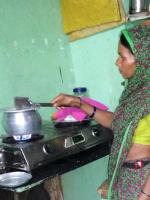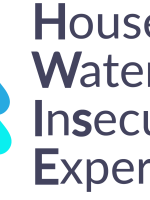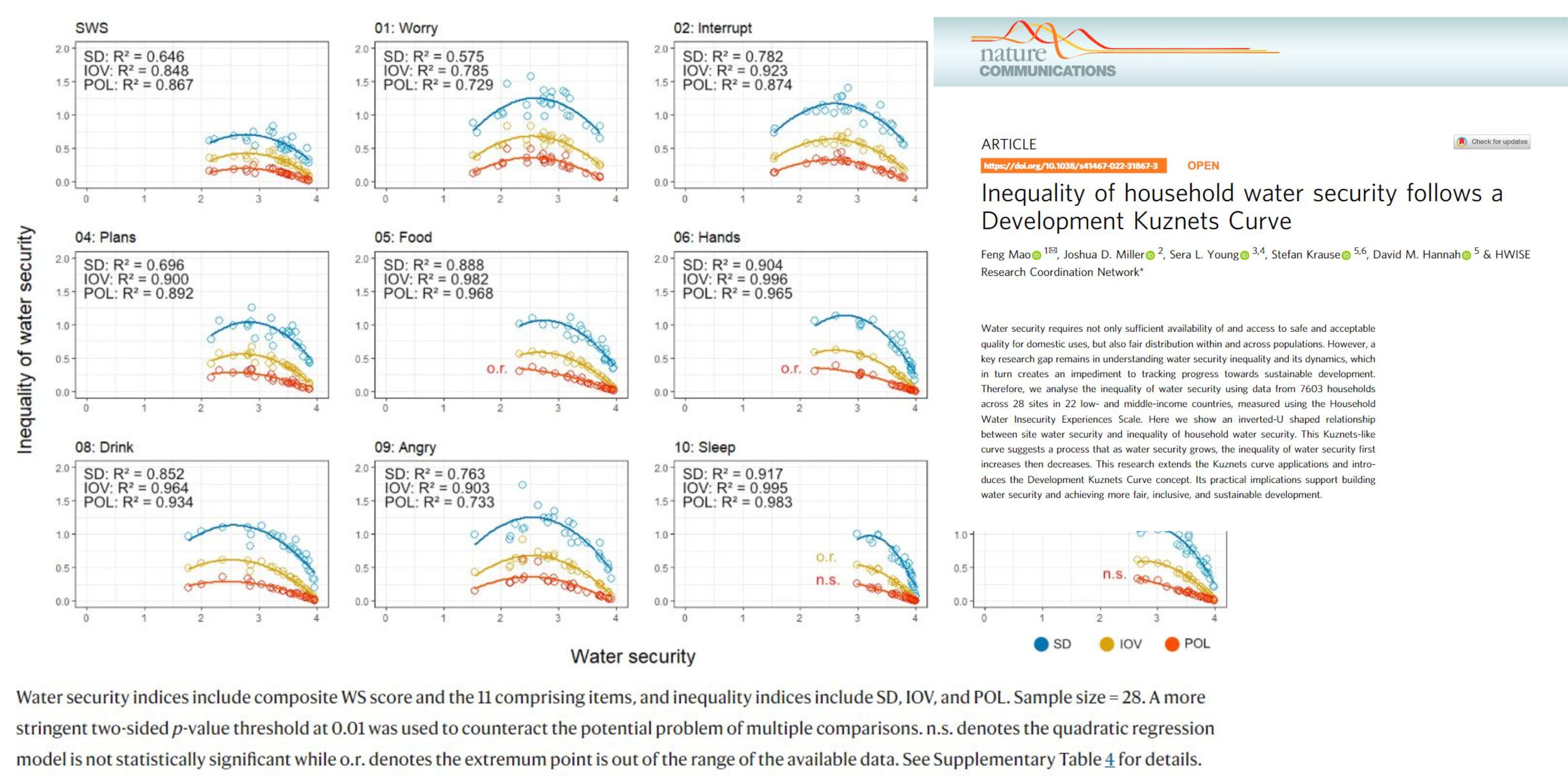Household food insecurity has emerged as a powerful predictor of a range of poor nutrition and health outcomes. Household water insecurity, i.e. reliable access to water in sufficient quantity and quality, may be equally or more powerfully predictive of adverse health outcomes as food insecurity has been. Yet strikingly, the role of household water insecurity has been almost entirely overlooked. In fact, because there is currently no validated scale for assessing household water insecurity (HHWI) across various cultural and ecological settings, it has not been possible to measure HHWI, understand its determinants, compare levels across settings, or understand how HHWI impacts agricultural, nutrition, and health.
This project therefore works to develop such a scale collaboratively, with institutions in the United States and 6 LMICs. Our team of investigators have expertise spanning agriculture, nutrition, anthropology, medicine, epidemiology, and behavioural sciences. Our central hypothesis is that HHWI negatively impacts nutritional status, in ways distinct from food insecurity. It aims to explore a variety of pathways by which this may occur, including decreased agricultural production, financial and opportunity costs, time and energy expenditure, and anxiety and stress
This hypothesis will be tested via three rigorous, but achievable objectives. First, a preliminary HHWI scale from the PI’s ongoing pregnancy cohort in Kenya will be refined (Objective 1). It will then be applied within the context of a multi-sectoral agricultural intervention in western Kenya, to test if HHWI impacts agricultural output or nutritional status (Objective 2). Finally, guidelines for the adaptation and validation of the HHWI will be codified in an online, open access manual, which will be used to facilitate the measurement of HHWI globally. This manual will then be implemented in Bangladesh, Brazil, Guatemala, Nepal, and Tajikistan (Objective 3).
This research is innovative for its use of cutting-edge mixed methods to develop a novel, cross-culturally appropriate HHWI scale, and because it will generate novel data to test hypotheses about the pathways by which HHWI may impact health. It is of major development relevance because a) water scarcity is a widespread and growing problem, b) women bear the burden of water acquisition and use globally, yet the quantification of their burden has not been rigorously undertaken; c) women’s abilities to acquire water are particularly constrained during pregnancy and lactation (when insufficient water can have long-term consequences for the infant); and d) there are a number of highly plausible and serious agricultural, economic, nutrition, infectious disease, and psychological consequences of household water insecurity that have not been characterized.
Further, there are a number of policy and programmatic implications of this metric: A better understanding of how household water insecurity is deleterious should point to new intervention strategies. Further, it will become possible to direct limited resources to targeting the causes of water insecurity, the most harmful sequelae, and the populations at greatest risk of adverse effects. Finally, this research will further the long-term goal of understanding how water links agriculture and food systems to human health and nutrition.
Resources
Publications:
Variations in household water affordability and water insecurity: An intersectional perspective from 18 low- and middle-income countries
Estimating national, demographic, and socioeconomic disparities in water insecurity experiences in low-income and middle-income countries in 2020–21: a cross-sectional, observational study using nationally representative survey data (2022)
Inequality of household water security follows a Development Kuznets Curve (2022)
Water sharing is a distressing form of reciprocity: Shame, upset, anger, and conflict over water in twenty cross-cultural sites (2022)
The Household Water Insecurity Experiences (HWISE) Scale: comparison scores from 27 sites in 22 countries
Water Insecurity is Associated with Lack of Viral Suppression and Greater Odds of AIDS-Defining Illnesses Among Adults with HIV in Western Kenya
Household Water and Food Insecurity Are Positively Associated with Poor Mental and Physical Health among Adults Living with HIV in Western Kenya
The Household Water InSecurity Experiences (HWISE) Scale: development and validation of a household water insecurity measure for low-income and middle-income countries
Cash water expenditures are associated with household water insecurity, food insecurity, and perceived stress in study sites across 20 low- and middle-income countries
A novel household water insecurity scale: Procedures and psychometric analysis among postpartum women in western Kenya
Development and validation protocol for an instrument to measure household water insecurity across cultures and ecologies: the Household Water InSecurity Experiences (HWISE) Scale
Household water sharing: a missing link in international health
“If there is no water, we cannot feed our children”: The far-reaching consequences of water insecurity on infant feeding practices and infant health across 16 low- and middle-income countries
Water sharing, reciprocity, and need: A comparative study of interhousehold water transfers in sub-Saharan Africa
Household water insecurity is strongly associated with food insecurity: Evidence from 27 sites in low- and middle-income countries
Water borrowing is consistently practiced globally and is associated with water-related system failures across diverse environments
User manual:
HWISE User Manual
Website:
Household Water Insecurity Experiences (HWISE) - Research Coordination Network (RCN)
Social Media:
@HWISE_RCN
Media coverage:
“Now, Water Insecurity Can Be Measured” The Hindu, 26 June 2019
If “Water Is Life,” Shouldn’t We Know How to Measure It? Anthropology News, 08 November 2018








